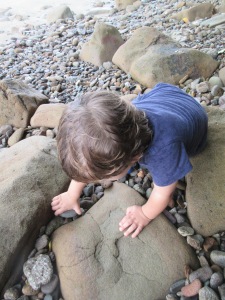
The quieter you become, the more you can hear – Ram Dass
I have thought about starting a meditation practice for as long as I can remember. I have read countless articles about the benefits – lowered reactivity, more patience, less stress, improved physical health – have been completely convinced that it is the ideal practice for my often harried mind and over stimulated nervous system. I have started and maintained a regular daily practice for about a week, multiple times. I even attended a 10-Day meditation retreat. But I never made it a regular, lasting habit.
Until this year.
This year, I decided would meditate every day, for at least 10 to 15 minutes a day.
And so far, I have.
And I love it.
But I still have questions.
- What is the best way to practice meditation?
- What about when I was actually sitting there focusing on my breath? What was supposed to happen then?
- Would I see a difference in my life outside of those moments of meditation? Would I be more peaceful? Would I be more patient? Would it be easier to pause and respond in the moment instead of reacting mindlessly?
WHAT IS THE BEST WAY TO PRACTICE?
Just like there is no “best way” to breathe, there is no “best way” to practice meditation – there is only the best way for each individual – the method that feels right, that allows you to settle into your practice and that motivates you to keep coming back day after day.
Before I began, I downloaded numerous guided meditations. I downloaded meditations from Tara Brach, Deepak Chopra, Thich Nhat Hanh and found numerous podcasts dedicated to regular meditation, such as A Quiet Mind, Meditation Oasis and Quiet…
…but I can’t speak to their efficacy because after two months, I have yet to open one. As an introverted mother of two – often rambunctious – young children, I found pleasure in retreating into meditation as a way to decompress and rejuvenate myself, preferring the silence and simplicity of just following my breath, to trying to concentrate on a guided mediation, in these moments.
And as in earlier attempts, I initially experienced some of the “monkey mind” often referred to in writings on meditation, when your mind jumps from one thought to the next, but I soon found myself settling into each practice and enjoying the peace, stillness and time to myself that meditation allowed.
WHAT WILL I EXPERIENCE DURING MEDITION?
Because meditation is such a personal experience, no one will experience the exact same sensations as anyone else, but initially it is common to feel:
- feelings of frustration;
- an inability to concentrate;
- an increased awareness of repetitive thoughts; and
- the need to continually refocus on the breathe, mantra, etc.
But as you persevere with your practice, the feelings become more pleasant, such as those mentioend by Light Watkins, in his post 5 Signs You Went into Deep Meditation, including:
- a feeling of deep relaxation,
- shallow breathing,
And from my own experiences:
- a feeling of floating,
- a feeling of vibrating energy
- a feeling of heaviness as your body sinks into your meditation surface; and
- an overall feeling of peace and well being.
WILL I SEE NOTICABLE CHANGES FROM A REGULAR MEDITATION PRACTICE?
I have always wondered how, or if, my life would really change with a regular meditation practice. I knew, that if I practiced regularly, my brain would change in positive ways. I know that I’d have moments of peace, as well as moments of frustration, when I was meditating, but would I see a difference in my life outside of those moments of meditation.
According to WildMind Buddhist Meditation, some of the outward signs of a progressing meditation practice include:
- a greater ability to concentrate;
- becoming more aware of the outside world;
- becoming more aware of your posture;
- becoming more aware of your actions;
- become aware of more interesting and vivid dreams;
- experiencing feelings of calmness and a reluctance to end a period of meditation;
- other people noticing that you are changing – becoming more relaxed, less reactive, and more friendly;
- having interesting experiences in meditation – like a delightful sense of rhythm in your breathing;
- noticing a gap between stimulus and response in your interactions, and realizing that you have a choice about how to respond; and
- becoming more dissatisfied through more self-awareness – and finding things about yourself that you want to change.
And now, after over two months of daily (albeit short) practice – although I haven’t experienced any of the above signs of a progressing practice – I can feel a change when I sit down, legs crossed, eyes closed. While there is still that initial flurry of activity, my body seems to know that this is time to rest. My limbs grow heavy, my focus turns inward, and often when the bell rings to signal that my time is up, I don’t want to move, enjoying the bliss of this trance-like state I’ve fallen into.
I haven’t been any moments where I feel, as others have written, that I am outside myself, connected through a shared energy, to the rest of the earth and it’s population. I’m still in my house, listening to the birds chirp, the horns honk and the occasional rooster crow.
But right now, that is enough for me.
How about you? Have you recently started a regular meditation practice? Or are you a seasoned practitioner with insight to share? If so, I’d love to hear from you!
Thanks for reading!
Sharon, Author, The Conscious Parenting Notebook







